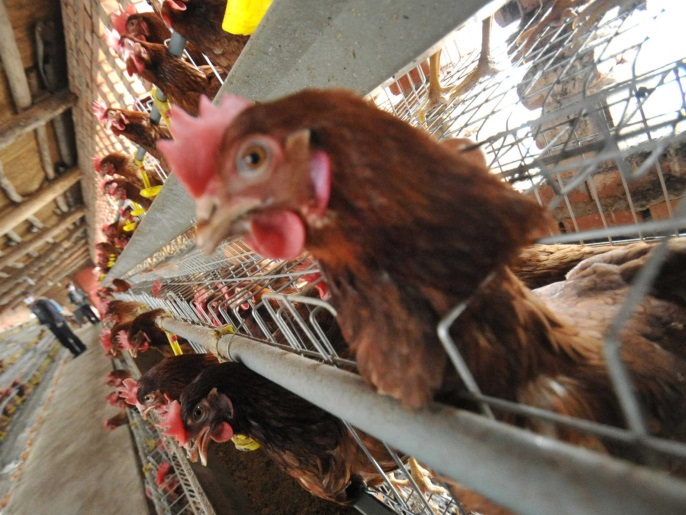To overcome this environmental crisis, researchers at the Swiss Federal Institute of Technology and Nanyang Technological University in Singapore have found a new way to get rid of chicken feathers and use them to generate clean electricity using hydrogen fuel cells, instead of burning these wastes that pollute the environment.
Fuel cell membrane made from chicken feathers
The researchers' innovation aims to make a fuel cell membrane from chicken feathers.
The fuel cell is known as a hydrogen fuel cell as it produces electricity through an electrochemical reaction using hydrogen and oxygen. Its idea is based on the opposite of the idea of decomposing water. When water is electrolyzed, hydrogen is separated from oxygen using two electrodes. As for the fuel cell, it makes the hydrogen interact with the oxygen, which produces an electric current.
According to the study published by the American Chemical Society journal, “Applied Materials & Interfaces,” researchers used chicken feathers to produce sustainable and clean energy, by using them in fuel cells and making them more cost-effective and more sustainable. The scientific team developed a membrane. The fuel cell is made from keratin found in chicken feathers.
Keratin is an insoluble protein found in reptiles, birds, amphibians, and mammals and is primarily involved in the formation of hair, wool, nails, claws, skin, teeth, hooves, and horns.

The statement issued by the Swiss Federal Institute says that the process followed by the researchers in producing energy is simple and environmentally friendly, as they extracted keratin protein from feathers and transformed it into very fine fibers known as “amyloid fibres.”
Keratin fibers are used in the fuel cell membrane. This results in the fuel cell generating electricity free of carbon dioxide, hydrogen and oxygen, and releasing only heat and water.
The statement of the Swiss Federal Institute of Technology adds that this new discovery could play an important role as a source of sustainable energy in the future, as at the heart of every fuel cell there is a semi-permeable membrane, which allows protons to pass but blocks the electrons, forcing them to flow through an external circuit of the negative anode. charge to the positively charged cathode, thus producing an electric current.
Conventional fuel cells rely on cell membranes made from highly toxic and expensive chemicals that do not degrade naturally in the environment. However, the membrane, developed by researchers at the Swiss Federal Institute of Technology and Nanyang Technological University, is made mainly of biological keratin, which is environmentally compatible and available in large quantities, as chicken feathers are composed of 90% keratin.
Benefits of the new membrane
There are other challenges that must be overcome before hydrogen can become a sustainable source of energy. In this regard, Rafael Mezenga, professor of food and soft materials at the Swiss Federal Institute of Technology in Zurich, says, “I have devoted a number of years to researching different ways in which we can use food waste in renewable energy systems.” Without any harm to the environment and public health.”
“The new membrane could serve well in the future, because it can be used not only in fuel cells, but also in water analysis,” Mezenga added. “In a process known as electrolysis, a direct current is passed through the water, causing oxygen to form at the charged anode.” With a positive charge, while hydrogen escapes at the negatively charged cathode, pure water is not conductive enough for this process and often requires the addition of acids. However, the new membrane is permeable to protons, thus enabling particle transfer between the anode and cathode necessary for efficient water splitting, even in pure water “The next step for the researchers will be to verify the stability and durability of their keratin membrane, and improve it if necessary.”


Post a Comment